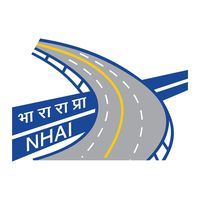The Road Ahead: India's Infrastructure Revolution** **
July 25, 2024, 6:33 pm

Location: India, Delhi, New Delhi
Employees: 1001-5000
Founded date: 1988
Total raised: $4.83B

Location: India, Maharashtra, Navi Mumbai
Employees: 10001+
Founded date: 1966
Total raised: $22.14M
**
India is on the move. The National Highways Authority of India (NHAI) is steering the country toward a new era of connectivity. With a focus on service roads and flyovers, the landscape of travel is changing. These projects are not just about concrete and asphalt; they are lifelines for millions.
Take the Trichy-Thanjavur National Highway. It’s a bustling artery, connecting urban and rural regions. The NHAI has decided to prioritize service roads here. Why? Because they are the veins that nourish local traffic. Service roads provide direct access to properties without disrupting the main flow. They are the unsung heroes of road safety, reducing congestion and the risk of accidents.
This decision is a strategic move. While flyovers offer long-term solutions, service roads provide immediate relief. It’s like choosing to treat a wound before planning for surgery. The NHAI is not just patching up problems; it’s laying the groundwork for future enhancements. This balanced approach is crucial for sustainable infrastructure.
Now, let’s shift gears to another major development. The travel time between Kanpur and Lucknow is about to shrink dramatically. Thanks to six new flyovers and 30 bridges, the journey will take just 35 minutes. This is not just a time-saver; it’s a game-changer.
These infrastructure upgrades are part of a larger initiative to modernize India’s highway system. They will alleviate congestion at critical junctions and span previously challenging stretches. The result? A smoother, faster journey that boosts regional connectivity and economic activity.
The NHAI’s efforts align with the broader goal of supporting sustainable urban growth. Improved road conditions enhance commuter comfort and safety. It’s a win-win for daily commuters and logistical operations alike. The completion of this project marks a significant milestone in India’s transport infrastructure evolution.
But it’s not just about roads. India’s fuel consumption is also on the rise. In June, there was a 2.6% increase compared to the previous year. This surge is driven by a rebound in aviation turbine fuel (ATF) and petrol usage. The aviation sector is recovering, with more flights operating domestically and internationally.
This uptick in fuel consumption reflects the country’s ongoing economic recovery. As travel restrictions ease, people are hitting the roads and skies again. It’s a sign of life returning to normal.
However, the energy sector faces challenges. Reliance Industries Limited (RIL) and Bharat Petroleum Corporation Limited (BPCL) are optimistic about recovering from a tough first quarter. They faced pressure from fluctuating market conditions and lower margins. But there’s hope on the horizon. As demand stabilizes, both companies anticipate improvements in product cracks.
The global economic landscape is complex. Volatile crude prices and geopolitical tensions have affected profitability. Yet, RIL and BPCL are poised for a turnaround. They are navigating the storm, ready to seize opportunities as they arise.
Meanwhile, ONGC Videsh is expanding its global footprint. The company is investing $60 million in Azerbaijan, aiming to enhance its presence in the oil and gas sector. This strategic move is about capitalizing on emerging opportunities. Azerbaijan, rich in hydrocarbon resources, offers lucrative prospects for energy companies.
ONGC Videsh’s decision aligns with its long-term strategy. It’s about looking beyond borders and expanding horizons. This investment is not just about immediate returns; it’s about securing a future in a competitive market.
As India’s infrastructure evolves, so does its energy landscape. The country is at a crossroads. The decisions made today will shape the future. The focus on service roads and flyovers is a testament to the commitment to improving connectivity.
These projects are not just about convenience; they are about safety and efficiency. They are the backbone of economic growth. As travel times decrease and fuel consumption rises, the potential for economic activity expands.
In conclusion, India is building more than just roads and bridges. It’s constructing a future. A future where connectivity drives growth and innovation. The NHAI’s initiatives are paving the way for a more integrated and prosperous nation.
The road ahead is bright. With each new project, India inches closer to its goals. The journey may be long, but the destination is worth it. As the country accelerates into this new era, one thing is clear: the infrastructure revolution is just beginning.
India is on the move. The National Highways Authority of India (NHAI) is steering the country toward a new era of connectivity. With a focus on service roads and flyovers, the landscape of travel is changing. These projects are not just about concrete and asphalt; they are lifelines for millions.
Take the Trichy-Thanjavur National Highway. It’s a bustling artery, connecting urban and rural regions. The NHAI has decided to prioritize service roads here. Why? Because they are the veins that nourish local traffic. Service roads provide direct access to properties without disrupting the main flow. They are the unsung heroes of road safety, reducing congestion and the risk of accidents.
This decision is a strategic move. While flyovers offer long-term solutions, service roads provide immediate relief. It’s like choosing to treat a wound before planning for surgery. The NHAI is not just patching up problems; it’s laying the groundwork for future enhancements. This balanced approach is crucial for sustainable infrastructure.
Now, let’s shift gears to another major development. The travel time between Kanpur and Lucknow is about to shrink dramatically. Thanks to six new flyovers and 30 bridges, the journey will take just 35 minutes. This is not just a time-saver; it’s a game-changer.
These infrastructure upgrades are part of a larger initiative to modernize India’s highway system. They will alleviate congestion at critical junctions and span previously challenging stretches. The result? A smoother, faster journey that boosts regional connectivity and economic activity.
The NHAI’s efforts align with the broader goal of supporting sustainable urban growth. Improved road conditions enhance commuter comfort and safety. It’s a win-win for daily commuters and logistical operations alike. The completion of this project marks a significant milestone in India’s transport infrastructure evolution.
But it’s not just about roads. India’s fuel consumption is also on the rise. In June, there was a 2.6% increase compared to the previous year. This surge is driven by a rebound in aviation turbine fuel (ATF) and petrol usage. The aviation sector is recovering, with more flights operating domestically and internationally.
This uptick in fuel consumption reflects the country’s ongoing economic recovery. As travel restrictions ease, people are hitting the roads and skies again. It’s a sign of life returning to normal.
However, the energy sector faces challenges. Reliance Industries Limited (RIL) and Bharat Petroleum Corporation Limited (BPCL) are optimistic about recovering from a tough first quarter. They faced pressure from fluctuating market conditions and lower margins. But there’s hope on the horizon. As demand stabilizes, both companies anticipate improvements in product cracks.
The global economic landscape is complex. Volatile crude prices and geopolitical tensions have affected profitability. Yet, RIL and BPCL are poised for a turnaround. They are navigating the storm, ready to seize opportunities as they arise.
Meanwhile, ONGC Videsh is expanding its global footprint. The company is investing $60 million in Azerbaijan, aiming to enhance its presence in the oil and gas sector. This strategic move is about capitalizing on emerging opportunities. Azerbaijan, rich in hydrocarbon resources, offers lucrative prospects for energy companies.
ONGC Videsh’s decision aligns with its long-term strategy. It’s about looking beyond borders and expanding horizons. This investment is not just about immediate returns; it’s about securing a future in a competitive market.
As India’s infrastructure evolves, so does its energy landscape. The country is at a crossroads. The decisions made today will shape the future. The focus on service roads and flyovers is a testament to the commitment to improving connectivity.
These projects are not just about convenience; they are about safety and efficiency. They are the backbone of economic growth. As travel times decrease and fuel consumption rises, the potential for economic activity expands.
In conclusion, India is building more than just roads and bridges. It’s constructing a future. A future where connectivity drives growth and innovation. The NHAI’s initiatives are paving the way for a more integrated and prosperous nation.
The road ahead is bright. With each new project, India inches closer to its goals. The journey may be long, but the destination is worth it. As the country accelerates into this new era, one thing is clear: the infrastructure revolution is just beginning.

